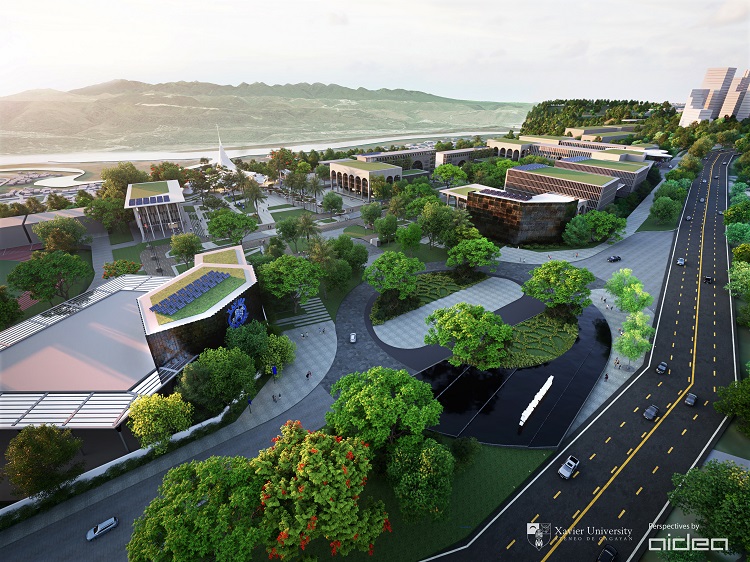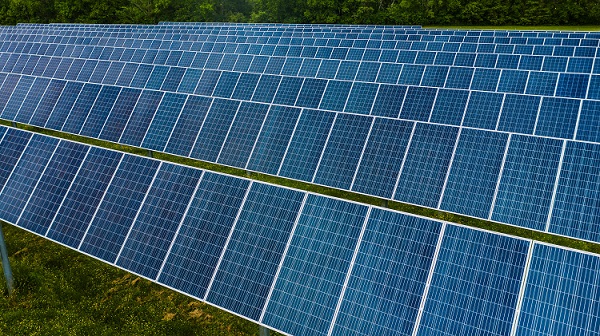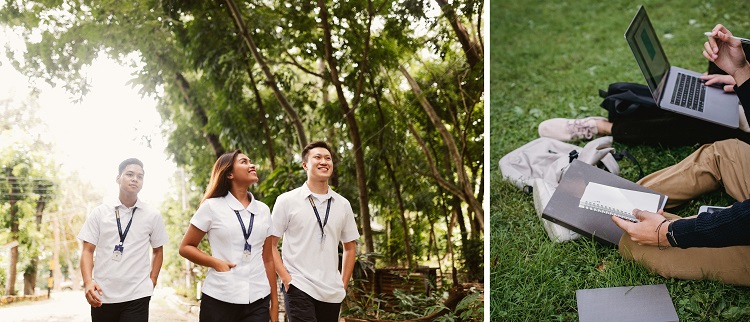
A series of preparations for the construction of the new campus of Xavier University-Ateneo de Cagayan are underway at the 21-hectare Masterson site. Earthworks have been carried out since the first week of December 2023, including clearing and grubbing, removal of structures and obstructions, excavation, road embankment, hauling and disposal, and tree cutting. The site development contractor also set up the temporary site office and portable batching plant as part of construction requirements. To secure the area, boards have been added to the fences of the construction site.
With these ongoing developments, XU reiterates its commitment to an environmentally sound and sustainable campus. It will integrate eco-friendly and cost-effective designs to reduce energy consumption, minimize waste, and provide healthy environment for the community. Foremost in its efforts is taking steps to ensure that environmental policies are followed and implemented. Among these was the creation of the Tree Tagging Committee, a very important undertaking in site development, which carried out the tree inventory and tree tagging to align with DENR Administrative Order 2021-11. Tree Tagging is done to identify and record specific trees that are to be cut or removed from the site. This process helps ensure that the correct trees are targeted for removal and that the cutting is done in compliance with regulations and environmental considerations.
The university also secured a Private Tree Plantation Registration (PTPR) from the Department of Environment and Natural Resources (DENR) and consequently, the Special Private Land Timber Permit (SPLTP). The PTPR shows the ownership of plantations or planted trees within private, titled lands or tax declared alienable and disposable lands, while the Tree Cutting Permit is issued to landowners for the cutting, gathering, and utilization of naturally growing trees.
Another major university effort is its institutional community engagement in a Tree Propagation and Growing endeavor. Working closely with its partner Cebu Landmasters Inc. (CLI) and CLI Foundation, XU led a four-week seed collection initiative involving 14 NSTP students. The students focused on collecting Narra pods, Molave seeds and Bitaog seeds. XU, in collaboration with CLI, and with the participation of various university offices and groups, will embark on a Tree Planting drive to replace the trees that were and will be cut; hence, tree nurseries will be established to propagate the trees from the collected seeds, including bamboos in Manresa. These will be planted in the new campus and in other XU campuses.

Aside from these, XU President Fr Mars Tan SJ disclosed other significant eco-friendly features of the future campus of Xavier Ateneo. He said XU is carefully planning the environmental design of the buildings and features of the new campus with its partners, architectural and interior design consultant Aidea Inc, and construction management team CLI Inc. The on-going site development work has made specific provisions for the installation and incorporation of these features.
Detention pond. This will collect and store excess water generated by storms, helping manage stormwater quantity and reduce downstream flooding risks. The stormwater accumulated in the pond will be used for irrigation purposes.
Sewage treatment plant (STP). All water consumed will be treated, recycled, and reused to protect the environment and health of the community.
Solar panel system. Solar panels will be installed on the roofs of most buildings to produce renewable energy for the entire campus and buildings.

Solar-power lighting system. This is an energy efficient way to light up the street and perimeter area of the new campus.
Green parks as learning spaces. Outdoor green parks will be provided as learning spaces to give students a closer experience of nature and support their mental and physical health.

Green landscaping. A sustainable and eco-friendly campus consists mostly of green lawns and gardens to enhance natural landscape and its conservation.
Lanes for bikes and electricity-generated vehicles. The new campus encourages the use of bikes and electric cars to help achieve an environmentally-sustainable campus.
Sustainability and wellness features or provisions of buildings. The buildings will be built with spaces that will help improve employees’ health and well-being.

Flora and fauna parks. As previously announced, the university guarantees the preservation of 25 hectares of protected forest and animal sanctuaries adjacent to the 21-hectare new campus.
Xavier University’s new campus is seen to be a boon to Northern Mindanao as it is expected to contribute to the region’s economic and social development. It poses to offer new and improved academic programs targeting 21st century skills with a future-ready campus facility. With this new campus, XU aims to fulfill its vision of becoming a leading ASEAN university in 2033 while staying true to its Catholic identity and Ignatian values.

Communications & Promotions Office








































